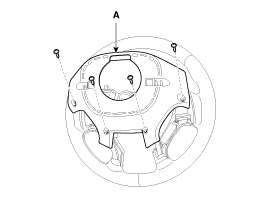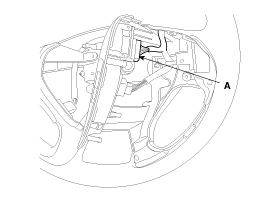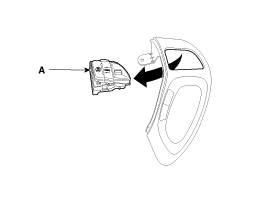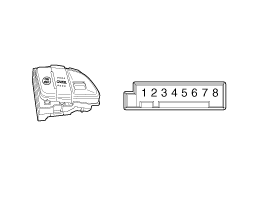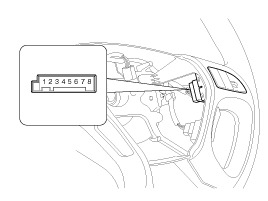Hyundai Tucson: Cruise Control System / Cruise Control Switch Repair procedures
| Removal and Installation |
| 1. |
Disconnect the battery negative terminal. |
| 2. |
Remove the driver airbag module.
(Refer to Restraint - "Driver Airbag (DAB) Module and Clock Spring") |
| 3. |
Remove the steering wheel.
(Refer to Steering System - "Steering Column and Shaft") |
| 4. |
Remove the steering wheel cover (A) after loosening the screws.
|
| 5. |
Disconnect the cruise control switch connector (A).
|
| 6. |
Remove the cruise control switch (A).
|
| 7. |
Installation is reverse order of removal. |
| Inspection |
| 1. |
Disconnect the cruise control switch connector from the control switch.
|
| 2. |
Measure resistance between terminals on the control switch when each function switch is ON (switch is depressed).
|
| 3. |
If not within specification, replace switch. |
| 1. |
Connect the cruise control switch connector to the control switch.
|
| 2. |
Measure voltage between terminals on the harness side connector when each function switch is ON (switch is depressed).
|
| 3. |
If not within specification, replace switch. |
 Cruise Control Switch Schematic Diagrams
Cruise Control Switch Schematic Diagrams
Circuit Diagram
...
Other information:
Hyundai Tucson (LM) 2010-2015 Owners Manual: Remote key precautions
The remote key will not work if any of the following occur:
The key is in the ignition switch.
You exceed the operating distance limit (about 30 m [90 feet]).
The remote key battery is weak.
Other vehicles or objects may be blocking the signal.
The weather is extremely cold.
The remote ...
Hyundai Tucson (LM) 2010-2015 Owners Manual: Recommended cold tire inflation pressures
All tire pressures (including the spare) should be checked when the tires are
cold. “Cold tires” means the vehicle has not been driven for at least three hours
or driven less than one mile (1.6 km).
Warm tires normally exceed recommended cold tire pressures by 4 to 6 psi (28
to 41 kPa). D ...

